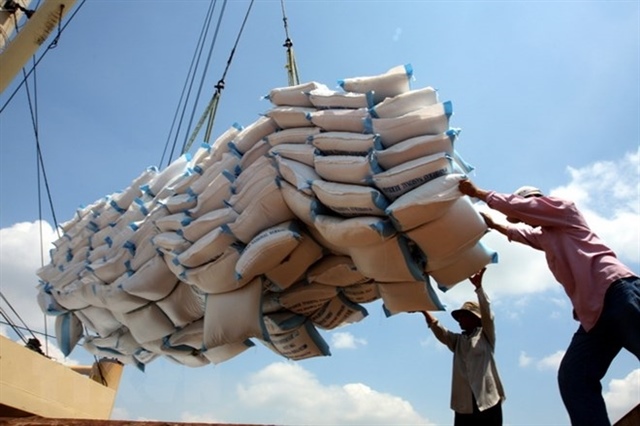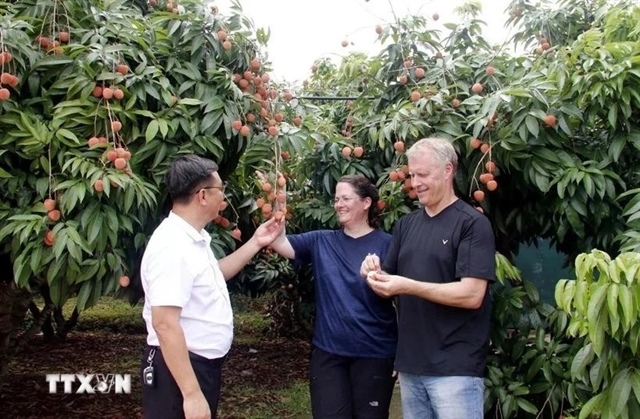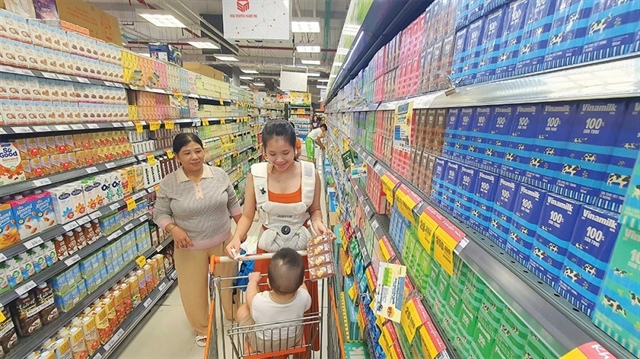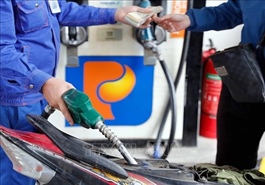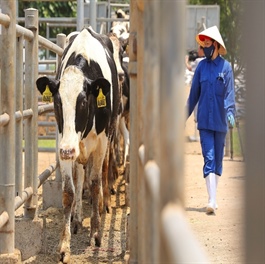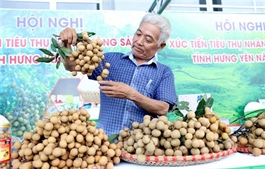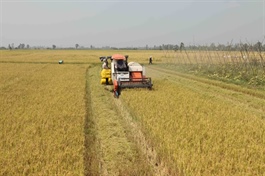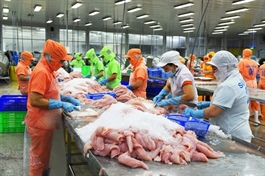Dairy industry approaches golden opportunities
Dairy industry approaches golden opportunities
To achieve sustainability and supply autonomy, a comprehensive strategy is needed, from livestock planning and technology investment to farmer support policies.
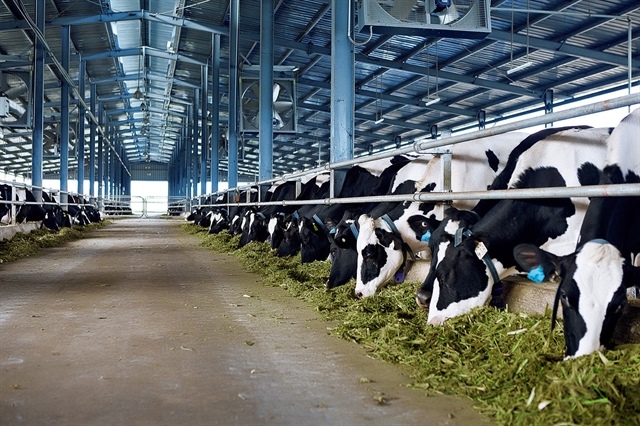
Currently, Việt Nam has only 3.3 dairy cows per 1,000 people. Photo suckhoedoisong.vn |
As demand for dairy products among consumers continues to rise, Việt Nam's dairy industry is seeing a significant opportunity to grow but also confronting many challenges related to raw material supply.
The country’s dairy sector has over recent years made notable progress in terms of output, quality and distribution systems.
However, to achieve sustainability and supply autonomy, a comprehensive strategy is needed, from livestock breeding and technology investment to farmer support policies.
According to Nguyễn Xuân Dương, chairmanof the Animal Husbandry Association of Vietnam (AHAV), dairy farming remains small in scale and heavily dependent on imported milk powder for reconstitution.
This means local consumers are missing out on the nutritional value of fresh milk.
At the same time, importing milk powder and turning it into liquid milk, reduces motivation for domestic dairy farming, pushing local farmers out of the value chain in their own land.
Statistics show a steep decline in the growth rate of raw fresh milk production. It grew by 17.7 per cent per year from 2010 to 2015, dropped to 6.7 per cent from 2015 to 2020, and further down to 3.3 per cent annually from 2021 to last year.
If this trend continues without proper solutions, Việt Nam will likely miss its target of 2.6 to 2.8 million tonnes of fresh milk by 2030 and fall short of achieving 60 per cent self-sufficiency in milk supply.
The main reasons include an annual increase of 8 to 12 per cent in dairy imports, with some years reaching 20 per cent, leading to an overheated and highly competitive market.
The COVID pandemic disrupted supply chains and raised production costs, making it difficult for farmers to maintain their cow herds and forcing many to reduce or quit dairy farming.
Raw material self-sufficiency
Việt Nam is a country with a long agricultural tradition. The ruling Communist Party and the Government have identified agriculture as a national advantage. Livestock farming plays a vital role in rural development and nutritional security, providing both food and livelihoods for millions of farmers.
The country’s goal is to reach around 60 per cent self-sufficiency in fresh milk after 2030 and raise per capita dairy consumption to about 100 kilograms per person per year by 2045.
This is entirely feasible because Việt Nam still has vast potential in dairy farming and an expanding domestic market.
Compared to other countries with well-developed dairy sectors or similar conditions, Việt Nam’s dairy herd is still relatively small given its natural resources, labour force, investment capacity and consumption demand.
Currently, Việt Nam has only 3.3 dairy cows per 1,000 people, which is one third of Thailand and Japan, half of South Korea, one-fourth of Israel, and only one-26th of the Netherlands.
With its natural and economic conditions, Việt Nam is actually better positioned for dairy farming than Japan or Israel. By 2030, the dairy herd could increase four to five times, reaching 1.3 to 1.5 million cows and producing 4.3 to 5 million tonnes of raw milk.
Science and technology are transforming the dairy industry, especially in areas such as biotechnology, housing systems, nutrition, breeding and digital solutions.
TH Group’s high tech dairy farm cluster in Nghệ An Province is one of the leading concentrated dairy operations globally, with nearly 70,000 cows raised on previously barren land.
Ngô Minh Hải, chairman of the Board of Directors of TH Group, said that Việt Nam had sufficient conditions to be fully self-sufficient in domestic fresh milk supply.
He said he believed that with a clear national strategy, the country's dairy industry could increase domestic supply to meet 70 per cent of demand by 2035, with average consumption reaching 54 litres per person per year.
TH Group has proposed two scenarios. If high-tech large-scale dairy farming is adopted with productivity of 35 litres per cow per day, around 700,000 cows would be needed. In the case of household-based farming, the total herd would need to be about 1.2 million cows.
Hải also proposed a zero-per cent VAT incentive for domestically supplied raw fresh milk, subsidies for investors in high-tech dairy farming, encouragement of land consolidation for large-scale projects and support for farmers participating in high-tech production value chains.
He also recommended the early implementation of a school milk programme to meet the demand of approximately 0.9 million tonnes of milk per year for 13.8 million preschool and primary school children.
Strategic vision
To develop a strong and competitive dairy industry with secure supply, Việt Nam needs to implement a coordinated set of actions.
AHAV chairman Dương proposed several recommendations for developing the domestic fresh milk supply. At first, dairy farming zones should be planned in concentrated areas linked to green feed sources. This would reduce transport costs, ensure stable feed availability, and improve disease control.
Government agencies needed to improve the legal framework and provide clear, consistent quality standards and regulations, he said. They should also encourage companies to use locally produced fresh milk.
Research and technology application should also be strengthened in both farming and processing.
High tech farming models combined with household based dairy farming under cooperatives are a practical solution that can help Việt Nam achieve raw milk self-sufficiency, especially for clean fresh milk products. At the same time, it is crucial to enhance training for technicians and farmers.
Public awareness campaigns are needed to help consumers better understand different types of milk and appreciate the value of clean fresh milk. Choosing fresh milk is not only about personal health but also a way to support domestic agriculture and the dairy sector.
Recently, the Vietnam Institute of Strategy and Policy for Industry and Trade organised a scientific seminar and "Fresh Milk Week" to gather input from experts, businesses and authorities.
This effort will help finalise the draft Strategy for the Development of the Dairy Industry to 2030 with Vision to 2045.
The aim is to promote sustainable fresh milk production, ensure food safety, raise public awareness, and support the localisation of the dairy sector.
Furthermore, Việt Nam needs a well-planned trade promotion strategy for its dairy products, especially organic milk, pure fresh milk, and specialised nutrition products.
Building a strong dairy brand based on quality, safety and sustainability will enhance the country’s position in global markets.
- 09:29 23/08/2025


